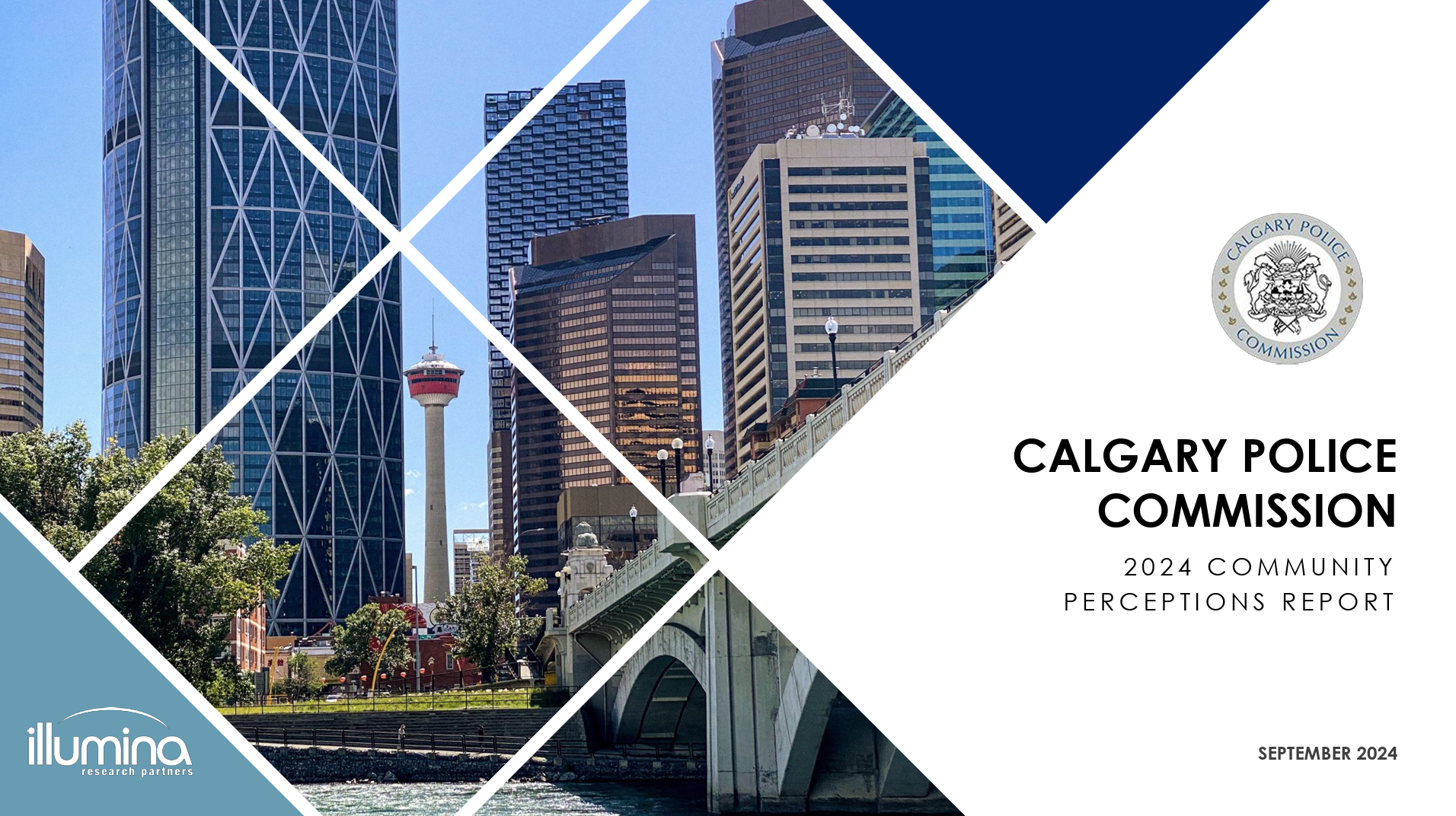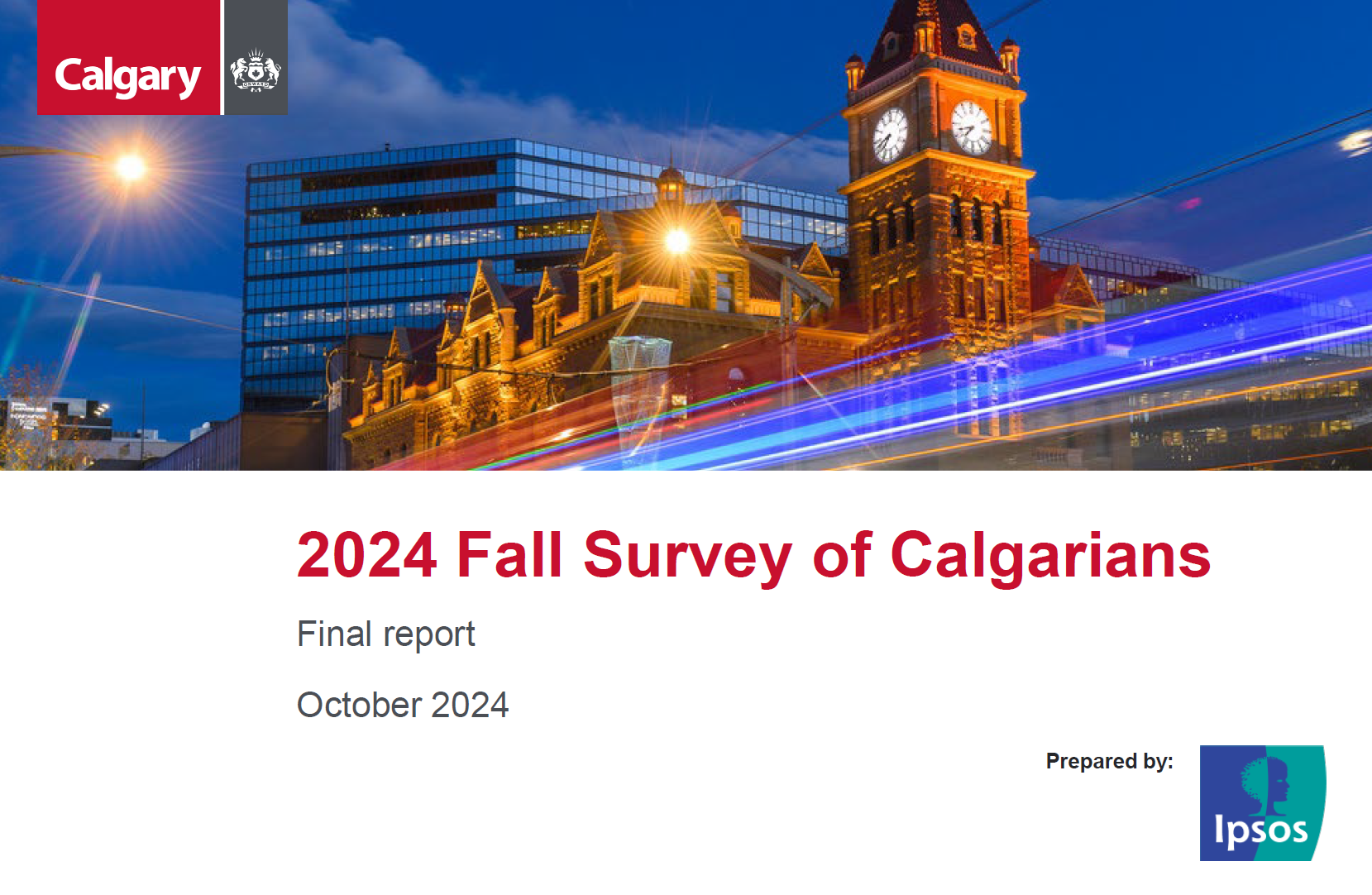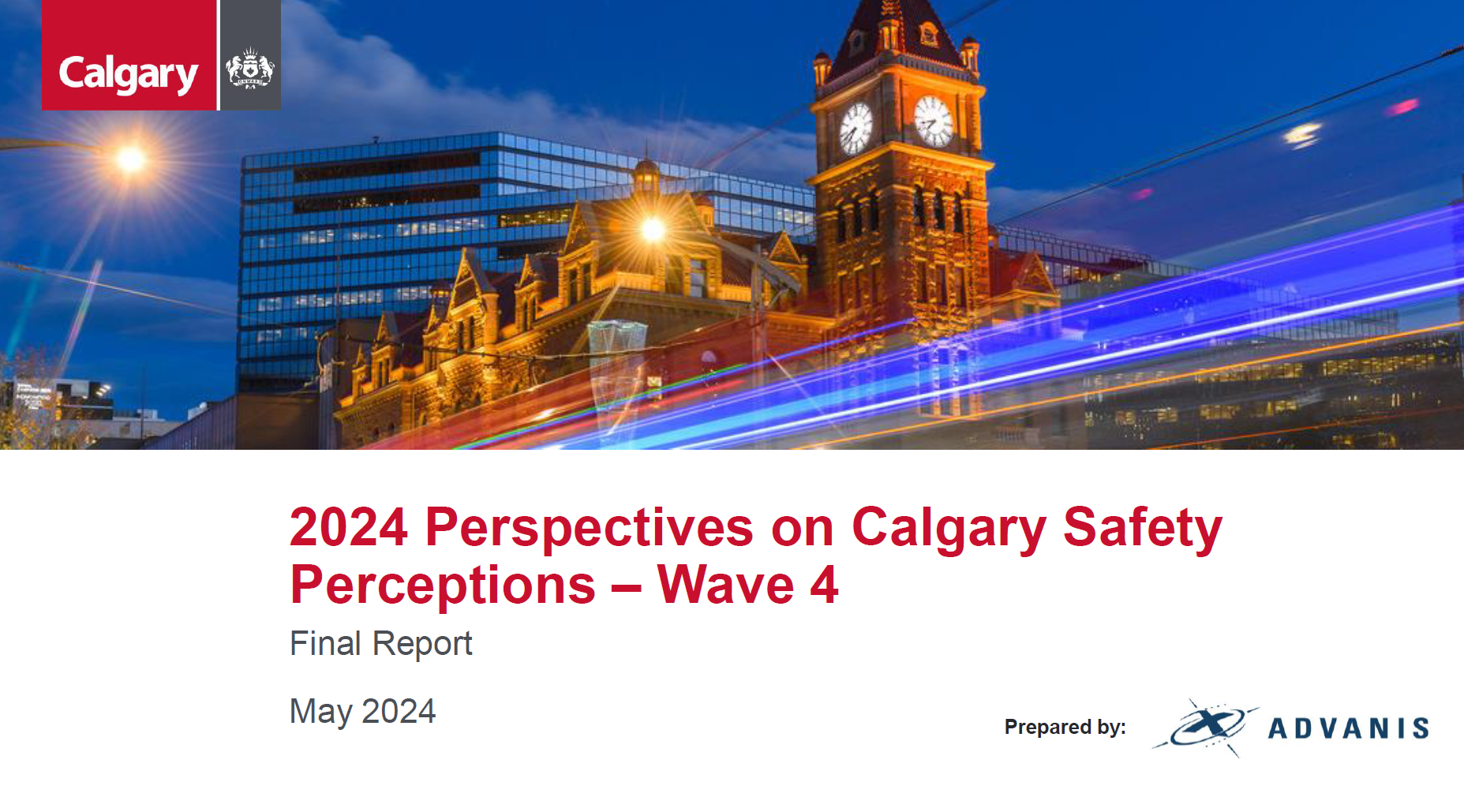Annual Police Report
2024 at a glance
Population of Calgary
1,509,800
-
3,273
Total Calgary Police Service employees -
2,334
Police officers71% of employees
-
939
Civilian employees29% of employees
Growth of the CPS
-
Million for operating and capital
-
-
-
Total calls for service
-
354,664
Public-generatedDown 6.3%
-
185,725
Officer-generatedUp 3.9%
-
20,726
Online reports from the publicDown 8.4%
-
Down 3.8%
-
Supporting Calgarians applying for employment and volunteer opportunities
Down 4%
2024 highlights
Throughout 2024, the Calgary Police Service (CPS) made some noteworthy achievements. These efforts were the result of teams from across the Service and external partnerships. Highlights include:
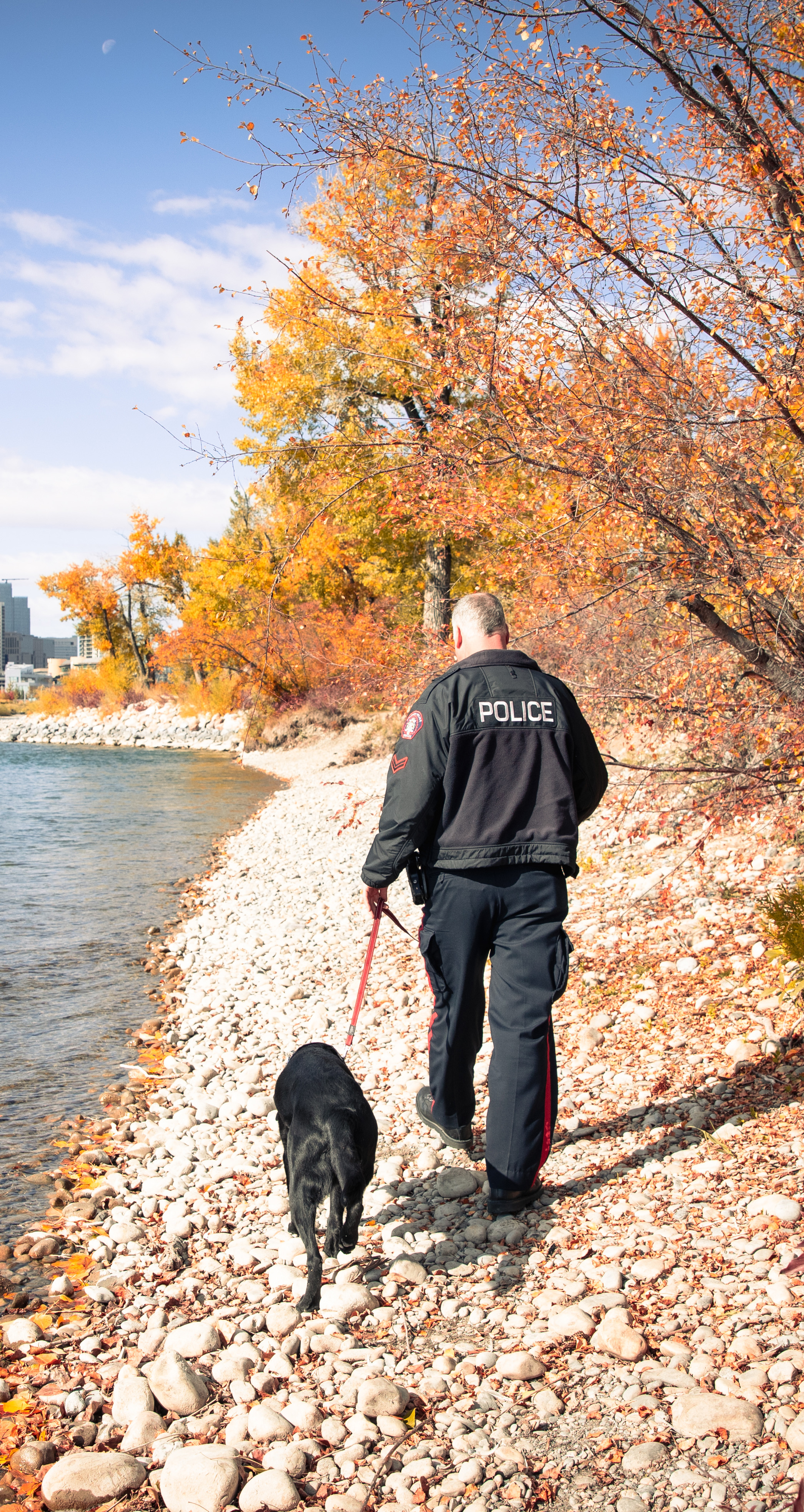
- A decrease in public disorder calls: Disorder-related calls in public spaces decreased by 6%. This decline is attributed to the ongoing success of the Calgary911/211 co-location initiative and the launch of the Community Engagement Response Team (CERT) that was created with 50 provincially funded officers.
- Securing funding to focus on violent crime initiatives: Resources were secured through the Guns and Gang Violence Action Fund for five initiatives to enhance evidence processing, investigative capacity, Crown disclosure support and strategic data management.
- Complaint resolution improvements: More than 79% of complaints received by the Professional Standards Section were resolved within 12 months.
- Career development and training improvements: A new learning management system, MyLearning, was deployed across the Service to enhance career development programs.
- Indigenous and equity engagement: Engagement with Indigenous communities and equity-focused groups was strengthened. These efforts were highlighted by planning and hosting the CPS’ first Inclusion Summit.
- Support for Calgarians in crisis: $9.4 million was allocated through the Community Safety Investment Framework (CSIF) to community groups and programs to enhance crisis support services.
- Police Review Commission (PRC) engagement: The Calgary Police Commission (CPC) and the CPS continued collaboration with the province to develop a new public agency under the Police Act for complaints, investigations and disciplinary hearings. Implementation of the PRC is anticipated by the end of 2025.
Effective police governance
The CPC is a governance board of 10 community members and two city councillors appointed by City Council and the Government of Alberta. The CPC hires and supervises the police chief, establishes police policies, works with the police to set annual priorities and plans, monitors aspects of the police complaint process and approves how the police budget is spent.
The CPC is the oldest police board in Alberta and celebrated its 90th anniversary in 2024. The CPC also:
- Held 10 Commission meetings, 32 committee meetings and one strategy day, to fulfill all legislated obligations and provide governance and oversight of the CPS.
- Decided that the CPS should no longer receive any portion of the fine revenue officers generate, something City Council agreed to change starting in 2026.
- Directed that the CPS’ policy for managing protests and other large events be updated to reflect current best practices.
- Continued to advocate with the province for improved police conduct regulations.
- Secured funding for a new indoor firearms training facility to expand training capacity.
- Conducted community and employee surveys to inform police priorities.
- Redesigned commissioner onboarding and training to improve effectiveness.
- Restructured committees to improve efficiency and better focus on priorities.
- Partnered with other police boards to share knowledge and advocate on both the provincial and federal levels.

Crime and public safety in Calgary
The CPS maintained focus on crime prevention, investigation and enforcement, which resulted in significant reductions in crime in 2024. Overall crime, which includes all criminal code offences except traffic, decreased 7% compared to 2023 and approximately 9% compared to the five-year average. This was reflected by reductions in shootings, homicides, break and enters and vehicle thefts.
-
546
Crime guns seizedChange from 2023: 27% increase
Change from 5-year average: 21% increase
-
78
ShootingsChange from 2023: 22% decrease
Change from 5-year average: 25.7% decrease
-
18
HomicidesChange from 2023: 28.6% decrease
Change from 5-year average: 30.2% decrease
-
10,948
AssaultsChange from 2023: 3% increase
Change from 5-year average: 15.4% increase
-
696
Street robberiesChange from 2023: 8.5% decrease
Change from 5-year average: 9.4% increase
-
389
Commercial robberiesChange from 2023: 20.1% increase
Change from 5-year average: 11% increase
-
Dwelling: 1,217
Break and entersChange from 2023: 17.8% decrease
Change from 5-year average: 29.1% decrease
-
Commercial: 2,799
Break and entersChange from 2023: 21.4% decrease
Change from 5-year average: 35.4% decrease
-
4,446
Vehicle theftsChange from 2023: 9.6% decrease
Change from 5-year average: 21% decrease
-
1,316
Sexual assault offencesChange from 2023: 7.4% decrease
Change from 5-year average: 3.5% decrease
-
116
Hate crimesChange from 2023: 1.7% increase
Change from 5-year average: 9.4% increase
-
126
Demonstrations managedChange from 2023: 46% decrease
Change from 5-year average: Not available
-
3043
Injury collisionsChange from 2023: 8.4% increase
Change from 5-year average: 26.3% increase
-
29
Fatal CollisionsChange from 2023: 21% increase
Change from 5-year average: 45% increase
-
77,794
Disorder eventsChange from 2023: 6.3% decrease
Change from 5-year average: 11.3% decrease
The Community Safety Dashboard offers up-to-date crime statistics for Calgary. For more information on crime statistics visit: data.calgarypolice.ca.
Responding to the community
The CPS prioritized the needs of the community in 2024. We receive regular feedback through different channels that allow us to best prioritize resources to meet the evolving needs of Calgarians. Notable initiatives that responded to community needs included:
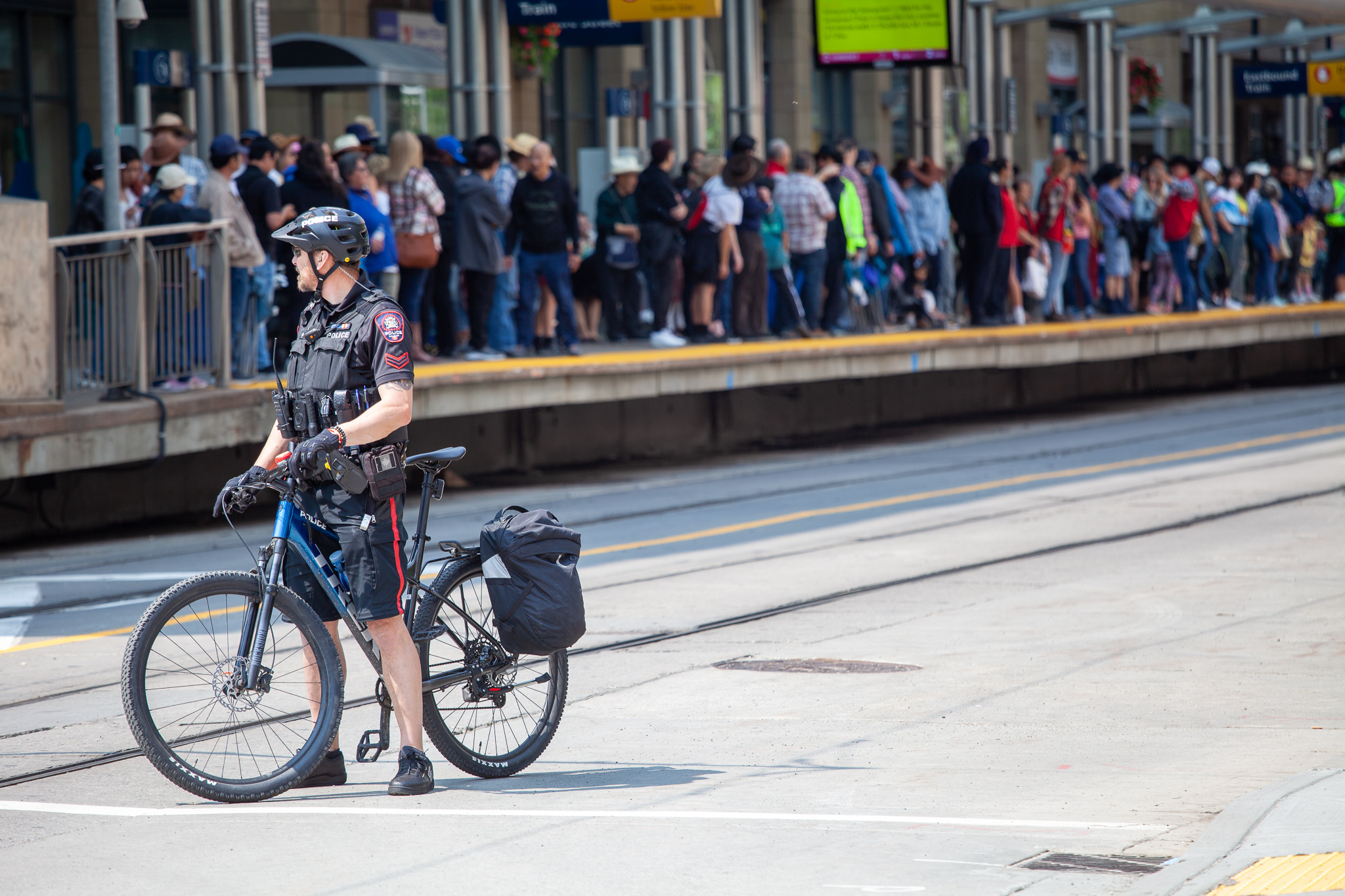
Race-based data analysis
Significant progress made in race-based data analysis, covering police-public interactions, such as victims, offenders, missing persons, officer contacts and use of force. In September 2024, a statistical report was created to provide an analysis of 2023 race data and an analysis of race-based data of use of force subjects. The Service continued to contribute to the Statistics Canada’s initiative to standardize race-based data reporting.
Youth programs
A total of 769 youths participated in programs offered by the Service, including the first Indigenous Youth Police Academy, which engaged 22 Indigenous youths aged 12 to 16. Other programs, like the Youth at Risk Development (YARD) program, saw significant waitlist growth, highlighting the desire for attendance.


Recruitment
The Service launched recruitment initiatives targeting diverse communities and women. Efforts included women’s recruiting bootcamps, the Called to Serve podcast, multilingual ad campaigns and partnerships with Indigenous media outlets. These efforts reached over one million potential applicants across Alberta, Vancouver and Toronto.
Community partnerships
Through CSIF funding, the CPS supported the Calgary 911/211 Co-location initiative with Distress Centre Calgary, the Mobile Response Team (MRT) with Recovery Alberta, the Indigenous Liaison Navigator for the Missing Persons Unit and partnerships with organizations such as Alpha House, the Missing Children’s Society of Canada and the Northeast Mental Health and Addiction Centre.
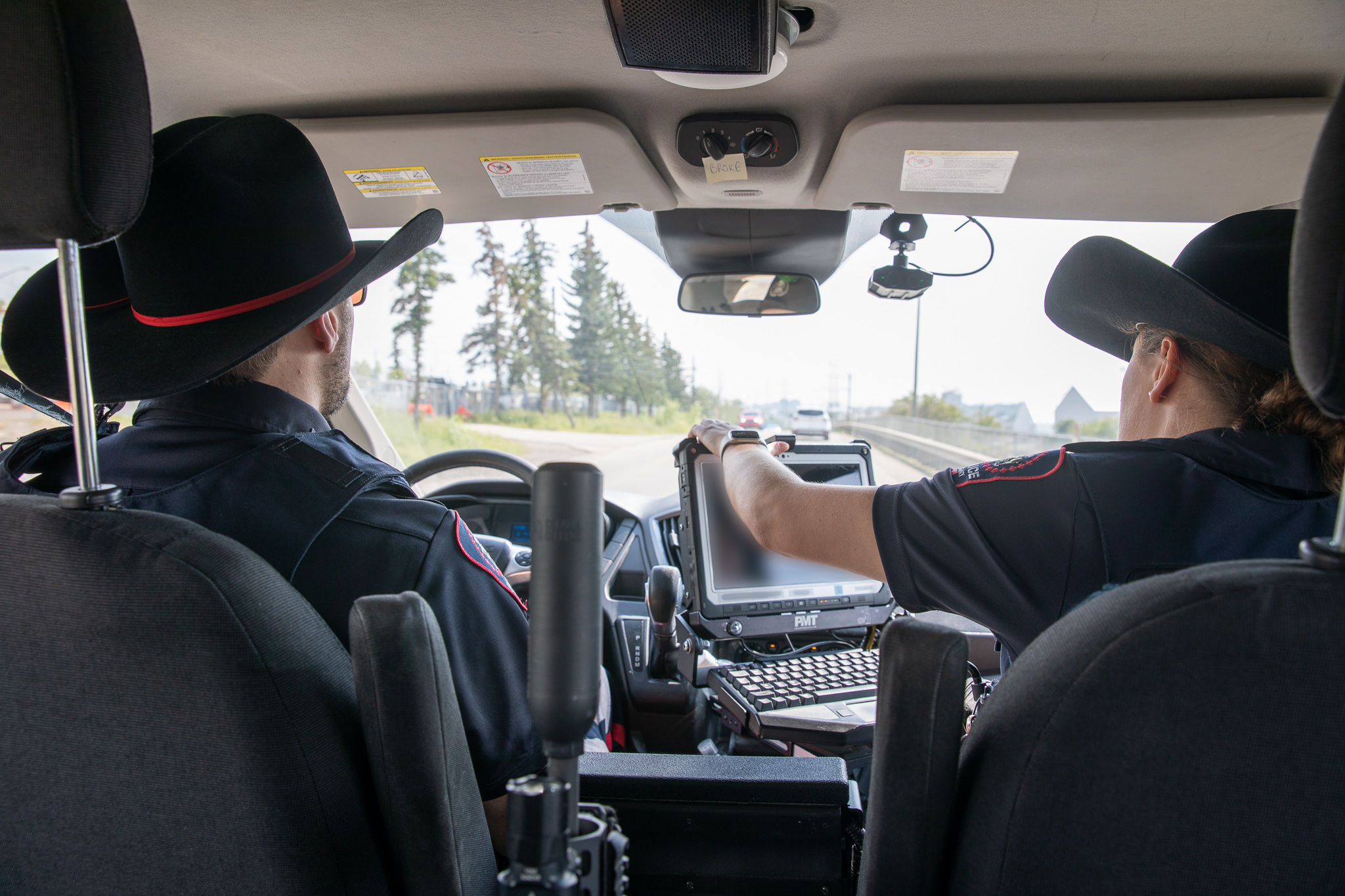

Frameworks
A new De-escalation and Use of Force Framework was introduced into training, emphasizing de-escalation and adherence to principles of necessary, reasonable and proportionate force under the Criminal Code of Canada.
Tire deflation devices
To enhance public safety, tire deflation devices were procured and training was provided to officers to address crime vehicles that present safety risks.
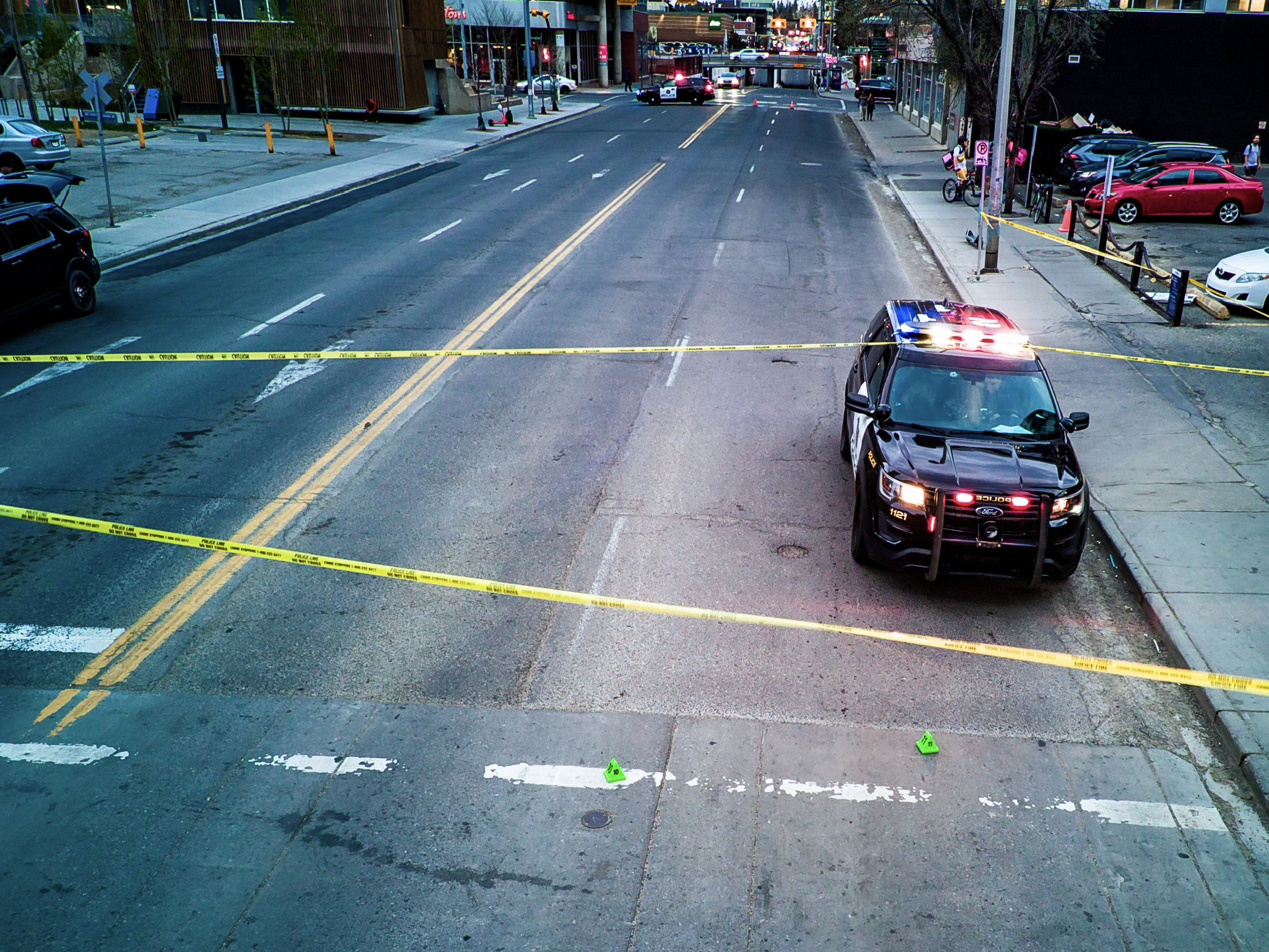
Supporting those who serve
Our members continued to be a core subject of focus throughout 2024. Through targeted initiatives, the Service was able to put forward new plans and tactics that will lead to ongoing wellness and success in their careers. In 2024, we supported employees through the following:
- Continued work to improve employee engagement. In 2024, there was an increase in the Employment Engagement Index (EEI), moving to 55, up from 53 in 2023. Civilian employees reported higher engagement than their sworn counterparts, while sworn members’ engagement showed significant improvement.
- LinkedIn Learning was integrated into MyLearning, providing self-directed online courses tailored to member roles, career stages and training goals.
- The Psychological Therapies Database was introduced to screen providers for qualifications, training and diversity/accessibility factors.
- The Global Diversity, Equity, Inclusion and Belonging tool was used to evaluate the Service’s progress on equity and inclusion, informing the EDIB Framework and Strategy for 2025.

Engaging the community
The CPS leveraged several third-party reports and surveys to gain better insight into the thoughts and needs of Calgarians and to also ensure public communication efforts are effective and well-received. In 2024:
The CPC’s Community Perceptions Report was released. According to the report, 86% of respondents agree Calgary is a safe place to live, and both satisfaction and confidence in the police remained consistent with 2022 levels at 85% and 86% respectively. Calgarians ranked drug activity, vehicle theft, concerns about homelessness and transit/LRT/CTrain safety as their top safety concerns. It is believed by 61% of respondents that the CPS is not adequately staffed and suggested by 41% of respondents that a more visible police presence is required, as well as better community outreach (27%) and the need for more/better officer training (21%) to address homelessness, mental health and drug use in the community.
The City of Calgary’s Fall Survey of Calgarians highlighted Calgarians’ overall perceptions of safety in their city improved statistically, with 75% describing Calgary as “safe,” up from 69% in the fall of 2023.
The City of Calgary’s Perspectives on Calgary Safety Perceptions report identified that 73% of Calgarians surveys agreed the city is safe, with 87% of Calgarians indicating the city is as safe, or more safe than other large Canadian cities.
To directly engage Calgarians, the CPS guided efforts to improve the impact of online and in-person communications. Some of the initiatives actioned in 2024 worked to improve social media content, grow the reach of online networks, offer translated materials, provide community-specific information and foster real-time interactions with members of the public.
Across the CPS’ social media channels, we added 72,286 new followers, published 4,853 posts and had an engagement rate of 6.04%. The industry benchmark for government organizations is 2.43%.
The Nextdoor app continued to be used to share tailored content to specific communities. Nextdoor was particularly useful in the Penbrooke Meadows standoff in March by using an alert system built into the platform to notify community residents of the ongoing incident.
Community Resource Officers (CROs) facilitated 39 Coffee with a Cop/Coffee with a Uniform events. These events provide informal opportunities for citizens to engage with law enforcement officers who serve in their communities. As a result, officers takeaway a better understanding of the needs to the Calgarians they serve.

Police budget
Operating Budget
(rounded to $ millions)
| Expenditures | 2024 (Budgeted) | 2024 (Actual) | 2025 (Budgeted) | Category Details |
|---|---|---|---|---|
| Salaries and Wages | 504 | 491 | 579 | Payroll for all employees (both police officers and civilian staff) including mandatory employer contributions, statutory premiums, shift premiums and court time. All salaries and any related premiums are negotiated by The City of Calgary’s Labour Relations Unit with the assistance of the CPS’ management. CPS is focused to vacancy management in alignment with regular attrition and turnover. |
| Overtime & Call Out | 11 | 25 | 11 | Overtime and call out for hours worked in excess of a shift or when investigations or major events require additional staffing. Officers are often required to finish laying charges or supporting victims of an incident past when their shift is scheduled to end in order to maintain officer continuity. This results in some unavoidable overtime. The Service actively manages overtime of both officers and civilians. Further, protests and large event policing requirements impact overtime and callout use, along with the need to cover vacant positions by offering overtime to other employees. |
| Materials and Supplies | 16 | 17 | 16 | Body-worn camera subscription fees, ammunition and equipment life cycling, uniforms, computer hardware and software requirements, vehicle replacement parts, etc. |
| Contracted Services | 15 | 19 | 24 | Contracted healthcare services, psychological supports, crime testing kits, labour relations support, external legal expertise, and specialized consultants to support long-term strategic plans (including the Service’s anti-racism and inclusion work). Further this category includes the Service’s commitment to CSIF (Community Safety Investment Framework).Also, this category includes funding that provides external wellness supports to employees and their families. |
| Insurance and Security | 14 | 15 | 14 | Contracting commissionaires for security and photo enforcement support, and insurance for all vehicles and facilities. |
| Maintenance and Rental of Equipment and Buildings | 17 | 18 | 17 | Janitorial services, building maintenance, computer hardware and software maintenance, and leasing costs for facilities not owned by the Service. |
| Utilities | 5 | 4 | 5 | Electricity, natural gas, water and sewer for all police facilities. |
| Vehicle Operation | 6 | 10 | 6 | Fuel for vehicles and specialty equipment, vehicle repairs, tires and maintenance. Replacement parts are captured separately in the materials and supplies category and vehicle replacement is captured separately in the capital budget. |
| Business Expenses | 5 | 6 | 5 | Mandatory recertification training, courses for skills upgrading, investigative travel, membership fees, volunteer expenses, and youth programing expenses. The Service strives to bring trainers to Calgary instead of sending groups of employees on trips. However, travel for some training is unavoidable. |
| Communication Expenses | 8 | 5 | 7 | Postage for tickets and other outgoing mail, cell phone data and airtime, radio network maintenance, advertising, printing, and promotional campaigns. |
| Contributions to Reserve Funds | 6 | 1 | 6 | Savings for known future expenses, including lifecycle replacement and major maintenance of the HAWCS helicopters, replacement of red light cameras, and vehicle replacement. |
| Total Expenditures | 607 | 611 | 690 |
| Funding Sources | 2024 (Budgeted) | 2024 (Actual) | 2025 (Budgeted) | Category Details |
|---|---|---|---|---|
| Municipal Taxes | 494 | 494 | 568 | While provincial grants, fines, user fees and other revenues reduce the cost of policing, the bulk of the police budget is funded using tax dollars collected by The City of Calgary. |
| Fines and Penalties | 48 | 33 | 48 | Income from tickets issued through photo radar, speed on green cameras, red light cameras, and officer traffic stops. Changes to provincial enforcement regulations have an unfavorable impact. |
| Provincial Grants | 36 | 47 | 47 | The majority relates to the provincial funding of approximately 330 police officers through the Policing Support Grant. Further funding of 50 police officers is through an additional grant that began in 2024. |
| Sales of Goods & Services | 22 | 28 | 20 | Fees are charged for some services, including providing airport security, policing large events, monitoring scrap sales, providing security clearances, and providing officers and other supports to provincial policing initiatives. |
| Alarm Bylaw Fees | 1 | 1 | 1 | Permit and false alarm infraction fees for security alarms. |
| Miscellaneous Revenue | 2 | 2 | 2 | Sale of assets, Calgary Police Youth Foundation donations, interest income from reserve accounts, and any other miscellaneous income. |
| Total Funding | 603 | 605 | 686 |
| Recoveries | 2024 (Budgeted) | 2024 (Actual) | 2025 (Budgeted) | Category Details |
|---|---|---|---|---|
| Internal Cost Recoveries | 4 | 6 | 4 | Costs recovered from other City of Calgary business units for policing services at events, use of the Service’s two-way radio infrastructure, and security clearances. |
| Total Recoveries | 4 | 6 | 4 |
Capital Budget
rounded to $ millions
| Expenditure | 2024 (Budgeted) | 2024 (Actual) | 2025 (Budgeted) | Category Details |
|---|---|---|---|---|
| Facilities | 47 | 3 | 28 | Infrastructure maintenance for 29 owned facilities and 14 leased facilities. Included in this capital budget are carried-over funds for a district office replacement and new indoor firearms range. |
| Vehicles | 5 | 4 | 16 | Lifecycle replacement of vehicle equipment and vehicles. The Service has over 1,200 vehicles that are typically replaced after seven years or 160,00 km. This expense is covered from savings in the vehicle reserve fund. |
| Equipment | 5 | 2 | 5 | Upgrading standard issue equipment and lifecycle replacement of red light cameras. The cost of red light camera replacement is covered from savings in the red light camera reserve fund. |
| Communications | 7 | 6 | 9 | Lifecycle replacement of existing communication systems, including portable radios, phones, and network infrastructure. |
| Computers | 6 | 4 | 6 | Lifecycle replacement of hardware, servers/storage, and security infrastructure. |
| Automated Fingerprint Identification System | 1 | 0 | 0 | Carried-over funding for a system lifecycle replacement. |
| Total Funding | 71 | 19 | 64 |
Police conduct
Police conduct complaints
The CPS and the CPC make statistics on police conduct complaints public in two reports. High-level statistics are reported in the annual report, followed by a detailed report being released on the CPS’ later in the year to outline how complaints were addressed.
| Police conduct complaints | 2020 | 2021 | 2022 | 2023 | 2024 | 5 Year Average | 2024 vs 5yr avg |
|---|---|---|---|---|---|---|---|
| Total Files Opened* | 1,368 | 1,434 | 1199 | 1,228 | 1,212 | 1,288 | -6% |
| Contacts | 888 | 977 | 796 | 879 | 874 | 883 | -1% |
| Complaints | 298 | 331 | 285 | 252 | 272 | 288 | -6% |
| Internal Complaints | 106 | 43 | 46 | 46 | 31 | 54 | -43% |
| 46.1 Files | 41 | 49 | 42 | 31 | 36 | 40 | -10% |
| Criminal/Statutory Files | 35 | 34 | 30 | 20 | 24 | 29 | -17% |
Definitions:
Contacts: When a member of the public contacts the CPS to raise a concern about police conduct, make an enquiry or request assistance. These can later turn into complaints.
Complaints: A complaint about the conduct of a police officer where the actions may have been a violation of police regulations or policies.
Internal Complaints: A complaint investigation initiated by the CPS itself regarding the conduct of a police officer where the actions may have been a violation of police regulations or policies.
46.1 Files: Notifications sent to the CPC and province about a police action that resulted in serious injury or death. These can lead to an investigation by the Alberta Serious Incident Response Team if the province determines it is within their mandate.
Criminal/Statutory Complaint: A complaint about an act by a police officer that may contravene provincial or federal legislation, like the Criminal Code. These complaints can be generated by a member of the public or by the CPS itself.
Compliments from the public recognizing police officers
| 2020 | 2021 | 2022 | 2023 | 2024 | 5 Year Average | 2024 vs 5yr avg | |
|---|---|---|---|---|---|---|---|
| Compliments | 326 | 324 | 306 | 270 | 262 | 298 | -12% |
Complaints against the chief
In 2024, there were three complaints filed with the Calgary Police Commission regarding the conduct of the police chief. One could not proceed after the complainant did not provide enough information. The other two were dismissed after the police chief resigned in May 2025, causing a loss of jurisdiction for the Commission.
Additional resources
Annual Policing Plan
Every year, the CPS updates and publishes the Annual Policing Plan (APP) that highlights the Service’s key areas of focus and updates on the status of initiatives.
To download the APP, visit:
To view the APP’s Interactive Progress Report for updates on key performance indicators, visit:
Race-based data report
In the belief that transparency and equity are the foundations of trust, the Service is committed to collecting and reporting on race-based data.
To view the Race Data Analysis and the Race Data Analysis of Use-of-Force Subjects, visit:
Professional Standards Section (PSS) Annual Report
Every year, the PSS reports on compliments, complaints, misconduct and the Section’s contributions to improving transparency, accountability and organizational efficiencies.
To view the PSS Annual Report, visit:
The Community Safety Dashboard
The dashboard was developed to offer Calgarians the ability to gauge current crime and disorder in their community compared to previous timeframes as well as other geographic areas. The dashboard is updated on the fifth day of every month.
To view the interactive dashboard, visit:
Calgary Police Commission Community Perceptions Report
Every two years the CPC engages an independent third-party to conduct a survey that will provide insight into how the community perceives the CPS.
To download the most recent Community Perceptions Report, visit:

